Performance Grade Bitumen is designed according to its physical and performance properties at various temperatures and is used in critical projects, such as asphalt paving in hot or cold regions. To determine the Performance Grade Bitumen or PG grade, experts analyze a sample of bitumen under varying temperatures and shear rates to evaluate its rheological properties. This testing identifies the bitumen’s stress and strain under different traffic and climatic conditions.
High-Temperature Testing: This process determines the resistance of bitumen to deformation, with results typically ranging from 16°C to 46°C. Higher temperature ratings indicate better performance.
Low-Temperature Testing: In this phase, bitumen is tested for hardness and cracking resistance at low temperatures, with results ranging from -20°C to -76°C. Lower temperature ratings signify enhanced flexibility and performance in colder climates.
The combined results of these tests define the bitumen’s PG grade, ensuring its suitability for specific conditions.
Production of Performance Grade Bitumen
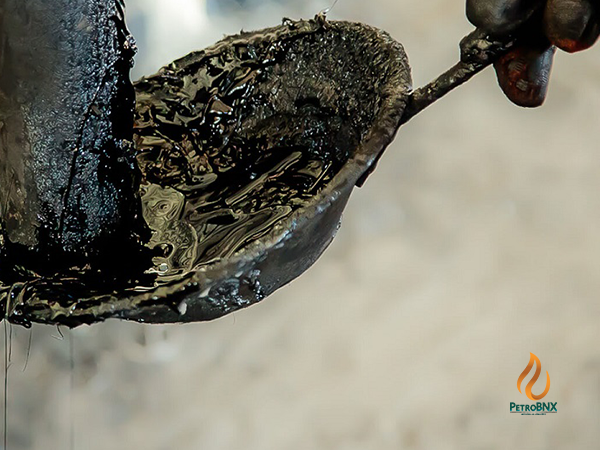
PG bitumen plays a crucial role as an asphalt binder in road construction and asphalt engineering. Its advanced performance characteristics make it superior to Penetration Grade Bitumen, ensuring robust road surfaces.
The production process involves:
Distillation: Separating crude oil components to extract base bitumen.
Air Blowing: Enhancing the bitumen’s properties by increasing its viscosity and softening point.
Polymer Modification: Adding polymers to improve flexibility, elasticity, and performance.
Testing: Conducting rigorous tests to ensure the bitumen meets performance standards.
This meticulous production process combines scientific expertise, advanced technology, and a deep understanding of petroleum and polymer properties. High-quality PG bitumen is essential for building durable road infrastructure, enabling safer and smoother transportation.
Contact Us for PG Bitumen
If you’re considering purchasing performance grade bitumen or need detailed information about its pricing, feel free to contact us at PetroBNX. Our team is ready to assist you with expert advice and high-quality products tailored to your needs.
Production Process of Performance Grade (PG) Bitumen
- Distillation
The production process begins with heating petroleum to approximately 350°C in an atmospheric distillation unit. During this stage, lighter hydrocarbons evaporate, while heavier hydrocarbons—known as vacuum bottoms or raw materials—remain in the container for further processing. - Air Blowing
Next, the raw materials are placed into a bitumen-blowing unit. Here, hot air is introduced into the unit, initiating a reaction between oxygen and the raw materials. This process, called oxidation, alters the physical properties of bitumen, resulting in oxidized bitumen with enhanced durability and performance. - Polymer Modification
To enhance bitumen’s performance characteristics, manufacturers incorporate specific polymers, such as Styrene-Butadiene-Styrene (SBS) and Atactic Polypropylene (APP). These polymers improve bitumen’s elastic and thermal properties, as well as its resistance to deformation. This step ensures that PG bitumen meets the demands of high-stress environments and extreme temperatures. - Testing
In the final stage, manufacturers conduct comprehensive tests to evaluate bitumen’s rheological properties—how it reacts to various temperatures and loading times. These tests determine the performance grade of the bitumen, ensuring it meets all necessary standards for road construction and other applications.
History of Performance Grade Bitumen Production
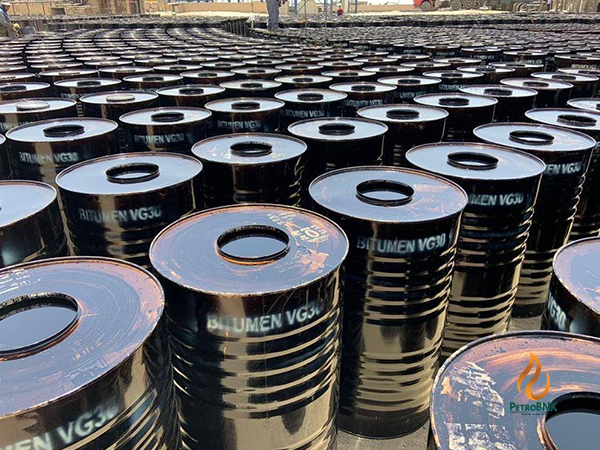
Between 1987 and 1993, the United States conducted an extensive research program to address the limitations of Viscosity Grade Bitumen and penetration-grade bitumen. The goal was to improve the performance, durability, and safety of asphalt roads.
Researchers evaluated bitumen’s performance under simulated real-life asphalt conditions to minimize damage such as rutting, low-temperature cracking, and fatigue. The program culminated in the development of a system to predict bitumen’s behavior in asphalt pavements, setting the foundation for the performance grading system used today.
Components of Performance Grade Bitumen
The composition of Performance Grade Bitumen varies based on its intended use and performance needs. By incorporating various additives and modifiers, manufacturers can tailor the bitumen to withstand local climates and traffic conditions.
Key Components
- Petroleum-Based Bitumen: The primary raw material refined for performance applications.
- Polymers: Improve elasticity, thermal stability, and resistance to deformation.
- Additives: Enhance durability and adaptability to specific environments.
This refined composition ensures that PG bitumen meets the performance demands of modern infrastructure projects.
Base Bitumen
Base bitumen is the primary ingredient of performance grade bitumen, derived from the distillation of petroleum. It possesses waterproofing and adhesive properties, which make it a crucial component for various paving applications.
Polymers
To improve the performance characteristics of bitumen, manufacturers introduce polymers like Styrene-Butadiene-Styrene (SBS) and Ethylene-Vinyl Acetate (EVA). These polymer modifications enhance the elasticity of PG bitumen, increasing its resistance to rutting and cracking under pressure, ensuring its performance in a wide range of conditions.
Additives
Various additives are used to enhance the properties of PG bitumen. These include adhesive enhancers, which improve the bonding between bitumen and aggregates, and anti-stripping agents, which help prevent water damage to asphalt by reducing the likelihood of moisture-induced damage.
Fillers
Mineral fillers like hydrated lime or fly ash are added to the bitumen mix to improve its viscosity and hardness. These fillers also increase the load-bearing capacity of PG bitumen, making it more suitable for heavy traffic conditions by enhancing the strength of the asphalt aggregates.
Reclaimed Asphalt Pavement (RAP)
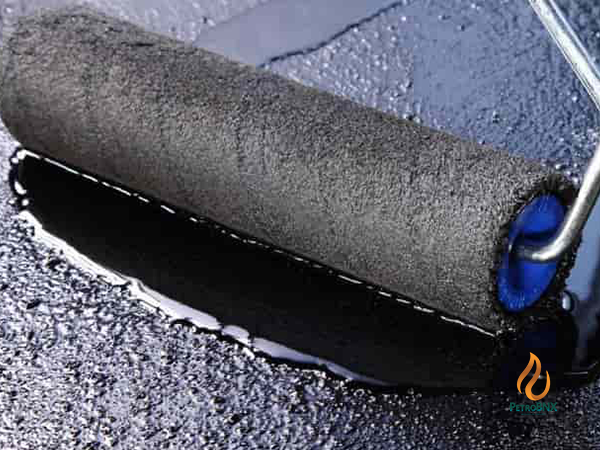
Manufacturers may also use Reclaimed Asphalt Pavement (RAP) to produce certain types of PG bitumen. This method allows for the inclusion of recycled materials, which not only enhances the sustainability of bitumen production but also improves the stability of the final product.
Crumb Rubber
Crumb rubber, made from discarded tires, is often incorporated into PG bitumen to create rubberized bitumen. This addition boosts the flexibility, sound absorption, and resistance to rutting and cracking of the bitumen, making it ideal for areas with heavy traffic or harsh weather conditions.
Types and Grades of Performance Grade Bitumen
As mentioned earlier, PG bitumen is classified based on its performance at different temperatures. The primary goal of this grading system is to ensure that bitumen performs optimally under varying environmental conditions. Manufacturers categorize Performance Grade Bitumen according to factors like climate and traffic speed. The grading system includes a series of tests that assess bitumen’s properties, allowing for accurate predictions of its field performance in paving applications.
Performance Grade of Bitumen
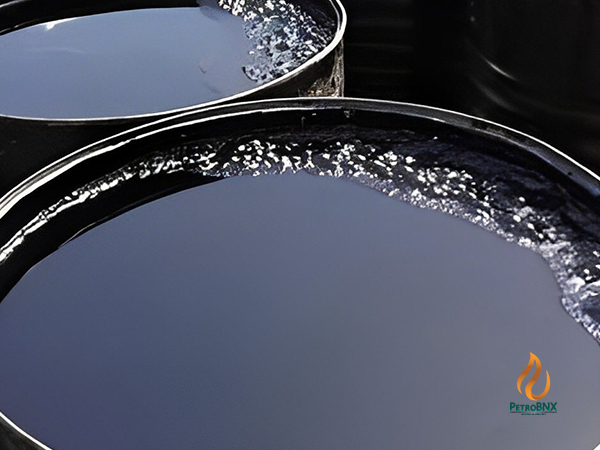
PG bitumen is primarily divided into two categories: high-temperature paving and low-temperature paving. When testing bitumen at high temperatures, the main concern is the rutting that occurs over time. Experts assess this by measuring the temperature during a week and considering the highest possible temperature, which is typically higher than the average environmental temperature. At low temperatures, the risk of thermal cracking arises. The grading of bitumen’s performance reflects its ability to withstand these challenges and provides insight into how well the material will perform under specific conditions.
PG 70-10
PG 70-10 is a type of performance grade bitumen categorized based on its performance at different temperatures. The PG system uses a series of standardized tests to evaluate the physical properties of bitumen under paving temperatures and specific traffic conditions. PG 70-10 bitumen is ideal for areas that experience hot summers and moderate winters.
PG 68-22
The performance-based categorization of bitumen helps experts select the appropriate grade for different environmental conditions. PG 68-22 bitumen is specifically designed for regions with hot summers and freezing winters, ensuring optimal performance in such challenging climates.
Pasargad Oil Bitumen
Introduction of Pasargad Oil Bitumen Products!
Pasargad Oil Bitumen is known for its high-quality performance grade bitumen products, designed to meet the demands of various climates and paving needs.
PG 64-22
For high-quality road pavings, manufacturers grade bitumen based on its performance at different environmental temperatures. PG 64-22 is well-suited for temperate climates and regions with cold winters, providing excellent durability and resistance to low-temperature cracking.
PG 64-16
PG 64-16 is assessed for its performance in various environmental temperatures, ensuring optimal results for roads under different traffic conditions. This grade is suitable for regions with temperate climates and cold winters, providing a reliable and durable solution for road construction.
PG 64-10
PG 64-10 bitumen is categorized based on its performance at different temperatures, making it ideal for regions with temperate climates. It performs well in areas with moderate weather conditions and is designed to withstand high-traffic environments.
PG 58-22
The categorization of performance grade bitumen ensures that road constructors choose the best option for different climates. PG 58-22 bitumen is most suitable for very cold weather conditions, providing excellent performance and durability in regions prone to freezing temperatures.
Performance Grade Bitumen Specifications
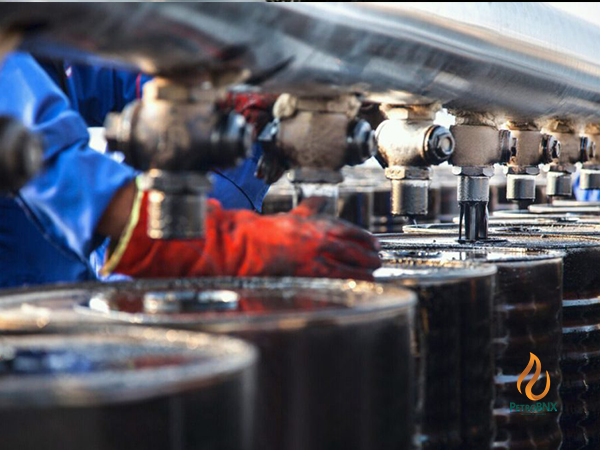
Performance grade bitumen is characterized by various specifications that make it ideal for use in construction and paving projects. Understanding these specifications is crucial for selecting the right PG bitumen for specific applications, ensuring optimal performance and road durability.
Viscosity
Performance grade bitumen has a specific range of viscosity, which dictates its flow rate at different temperatures. This ensures that bitumen adheres strongly to aggregates during the mixing and compression process, improving the final road quality.
Penetration
Penetration refers to the depth a standard needle penetrates bitumen under specific conditions. The controlled penetration value of PG bitumen influences its consistency and its ability to resist deformation under heavy traffic loads, ensuring longevity and reliability in road constructions.
Softening Point
The softening point of performance grade (PG) bitumen is the temperature at which it reaches a certain degree of softening. This is crucial as it determines the bitumen’s resistance to deformation at varying temperatures, making it essential for selecting suitable bitumen for different climates.
Ductility
Ductility refers to the ability of PG bitumen to stretch without breaking. This characteristic is vital in preventing cracks and ensuring the longevity of the paved surfaces, as it allows the bitumen to accommodate stress without failing.
Elastic Recovery
Elastic recovery refers to PG bitumen’s ability to revert to its original form after being stretched. This property is particularly important in paving, as it helps the bitumen bear constant traffic loads without permanent deformation, ensuring a durable, long-lasting pavement.
Rheological Features
Experts use rheological tests to assess the performance properties of PG bitumen at different temperatures and loadings. Parameters such as complex modulus and phase angles help evaluate the bitumen’s ability to resist rutting, fatigue, and thermal cracking, ensuring its reliability under various conditions.
Resistance to Fatigue
PG bitumen is specifically designed to resist fatigue caused by exposure to environmental factors like air, water, and sunlight. By adding certain additives, manufacturers enhance the bitumen’s longevity and prevent premature deterioration, ensuring the road’s durability over time.
Technical Properties of PG Bitumen
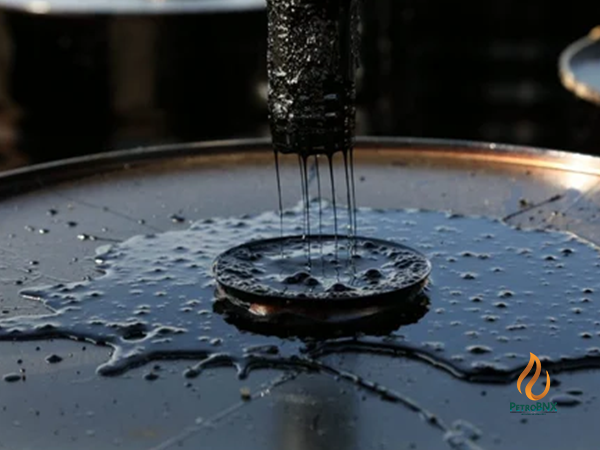
Performance grade bitumen (also known as asphalt binder) is produced and categorized to withstand diverse weather conditions and traffic loads. The specifications of PG bitumen depend on the regional climate and temperature where it will be used. The American Association of State Highway and Transportation Officials (AASHTO) defines these technical specifications under the M320 standard, ensuring consistency and performance across various environments. Some key specifications include:
Temperature Grading
PG bitumen is classified based on extreme local temperatures—both high and low. The high temperature represents the maximum average temperature for 7-day paving, showing resistance to rutting and permanent deformation. The low temperature, based on the minimum paving temperature, reflects the bitumen’s resistance to thermal cracking.
Polymer Modification
If the PG asphalt binder contains polymers, it will have the letter “S” in its grade name (e.g., PG 58S-22). Polymer-modified bitumen enhances elasticity, increases resistance to temperature fluctuations and fatigue, and improves adhesive properties, resulting in superior performance.
Performance Test
The performance of PG bitumen is measured using several tests, including:
Rutting Factor: Measures resistance to permanent deformation. A higher value indicates better resistance to rutting.
Fatigue Factor: Assesses the bitumen’s ability to resist fatigue cracking.
Creep Stiffness and M-value: These parameters gauge low-temperature characteristics, particularly resistance to thermal cracks.
Binder Grade
The binder grade is defined by two numbers (e.g., PG 58-22). The first number represents the maximum average temperature for 7-day paving (in Celsius), while the second number denotes the expected minimum temperature for paving in the region. This classification helps road engineers select the best performance grade bitumen for specific local conditions.
Benefits of Using Performance Grade Bitumen
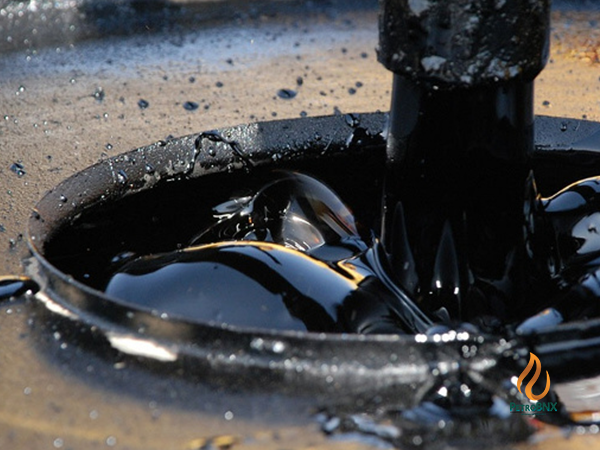
Performance grade bitumen offers numerous advantages due to its tailored grading for special weather conditions. These benefits include better consistency, superior performance under extreme conditions, and longer-lasting pavements. In this section, we will explore the key benefits of using PG bitumen in road construction.
Increased Durability
One of the primary benefits of performance grade (PG) bitumen is its increased durability, which directly enhances the performance of paved surfaces. By incorporating PG bitumen into asphalt mixtures for roads and other infrastructure projects, road constructors can create longer-lasting pavements that require less frequent maintenance. This is because PG bitumen is specifically designed to resist deformation at high temperatures and cracking at low temperatures, addressing the two main factors that cause pavement distress and failure.
Increased Safety for Roads
Using PG bitumen in road construction, including for airport runways, significantly improves road safety. PG bitumen’s resistance to high temperatures helps prevent rutting and the formation of bumps that could lead to uneven surfaces. This, in turn, reduces the risk of skidding and accidents, enhancing the overall safety of the road.
Cost-Effective Products
PG bitumen’s resistance to cracking at low temperatures also reduces the risk of tire damage and improves driving comfort. Additionally, its enhanced stability helps reduce the need for constant monitoring and repairs, making roads more cost-effective in the long term. With less maintenance required, road constructors can save on resources, minimize waste, and reduce traffic disruptions, contributing to overall cost savings.
Compatibility
PG bitumen is highly adaptable, as manufacturers can produce it using recycled materials, which helps mitigate the environmental impact of bitumen production. Furthermore, PG bitumen is versatile, making it suitable for various infrastructure projects, including roads, airport runways, parking lots, and industrial pavings. Its performance can also be adjusted to meet the needs of different weather conditions and traffic loads, making it a reliable choice for diverse regional requirements.
Performance Grade Bitumen Maintenance
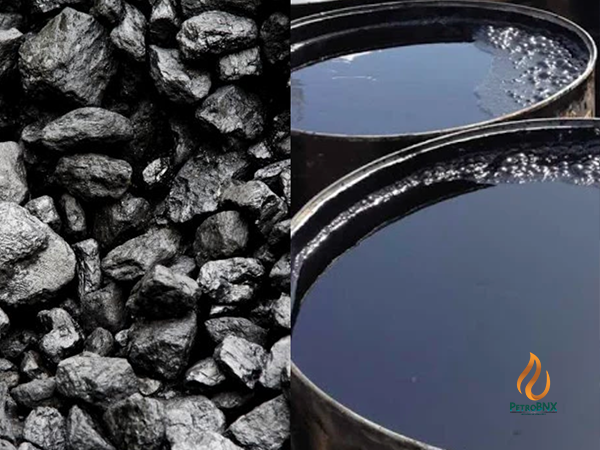
To maximize the performance and lifespan of PG bitumen pavings, proper maintenance is essential. Adhering to industry standards and maintenance practices ensures that PG bitumen maintains its effectiveness, delivering safer and more durable pavements.
Regular Inspections
Routine inspections are critical for detecting damage such as cracks, potholes, or ruts in PG bitumen pavings. Early detection allows for prompt repairs, preventing further damage and extending the lifespan of the pavement.
Sealing Cracks
Sealing cracks in PG bitumen pavings is vital to protect them from moisture infiltration and prevent the cracks from expanding. Proper sealing helps maintain the structural integrity of the pavement, preventing further degradation and ensuring its continued performance.
These benefits and maintenance tips highlight the superior qualities of PG bitumen and underscore why it’s an excellent choice for infrastructure projects that require durability, safety, and cost-effectiveness.
Patching Potholes
Prompt pothole repair is essential to prevent further damage and ensure the safety of both vehicles and pedestrians. Pothole patching involves removing the damaged area, preparing the base asphalt, and filling the space with appropriate bitumen materials. This process helps prevent the pothole from expanding and causing more severe damage to the road.
Surface Repairs
To protect the surface of the pavement from oxidation, weathering, and minor damages, surface repair treatments such as seal coating or slurry seals should be applied. These methods help increase the pavement’s longevity, improve its appearance, and reduce the effects of environmental wear and tear.
Preventive Care
Preventive care is crucial for maintaining the structural integrity of PG bitumen pavings. Regular sweeping of the road to remove debris, controlling vegetation to prevent root damage, and maintaining proper drainage to avoid waterlogging are key strategies that can prevent long-term damage and prolong the life of the paving.
Rehabilitation and Overlay
In cases where the paving shows significant deterioration or structural issues, rehabilitation or overlay may be necessary. These methods involve resurfacing the existing pavement with a new layer of performance grade bitumen and aggregates, effectively restoring and extending the pavement’s lifespan.
Monitoring Temperature
Temperature fluctuations can have a significant impact on the performance of PG bitumen pavings, potentially leading to thermal cracking or rutting. To mitigate these issues, it’s important to monitor temperature changes and adjust the bitumen accordingly, possibly adding other additives to enhance its performance in extreme conditions.
Regular Cleaning
Regular cleaning of the sidewalks and road surfaces is essential to prevent the accumulation of debris, oil leaks, and pollutants. Keeping the road clean helps maintain its appearance, prevents discoloration, and reduces the risk of safety hazards, such as slippery or uneven surfaces.
Managing Traffic
During road maintenance, traffic management strategies are crucial to ensure the safety of both road workers and users. Proper signage, barricades, and temporary traffic control measures should be used as necessary to minimize disruptions and prevent accidents during the maintenance process.
Durability of Performance Grade Bitumen
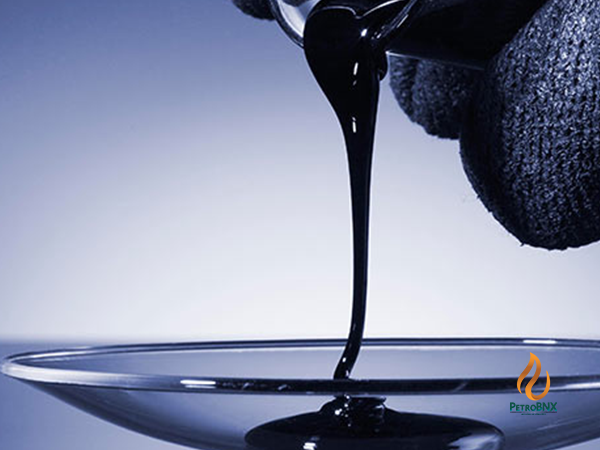
Performance grade bitumen (PG bitumen) stands out for its high durability, especially when compared to penetration grade and viscosity bitumen. Its ability to withstand extreme temperatures and heavy traffic conditions makes it a superior choice for ensuring the longevity of roads and pavements. PG bitumen helps reduce common issues like rutting, cracking, and deformation, even under varying weather and traffic conditions. This durability results in fewer maintenance requirements over time, making PG bitumen an economically viable option for road construction and infrastructure projects.
PG Bitumen’s High Endurance to Temperature
Performance grade (PG) bitumen is designed to withstand extreme temperature conditions, ensuring that pavements maintain their integrity in both hot and cold climates. PG bitumen resists rutting during hot weather, where traditional bitumen may soften and deform, and it remains robust in cold weather, preventing cracking that would otherwise occur with more fragile materials. This high endurance to temperature-related issues makes PG bitumen ideal for various climates and increases the longevity of roads and pavings.
Performance Grade Bitumen’s Resistance to Deformation
The rutting factor measures the bitumen’s ability to resist permanent deformation under load. PG bitumen has a higher rutting factor compared to other types of bitumen, indicating its superior resistance to deformation under high traffic loads. This quality enhances the durability of the pavement and ensures that it maintains its smoothness and structure over time, even with constant traffic pressure.
Performance Grade Bitumen’s Resistance to Fatigue Cracks
The fatigue factor is a key measurement that determines the bitumen’s resistance to cracking due to repeated stress from traffic. A lower fatigue factor in PG bitumen indicates a higher resistance to these types of cracks. This resistance is vital for maintaining the structural integrity of pavements subjected to heavy and continuous traffic, thus extending the service life of roadways and reducing the need for frequent repairs.
Performance Grade Bitumen’s Enhanced Low-Temperature Traits
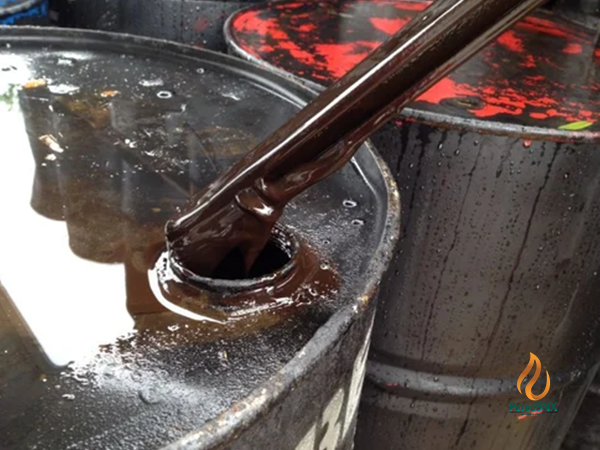
At low temperatures, PG bitumen exhibits superior properties that make it less prone to thermal cracking. The creep stiffness and M-value parameters are used to evaluate PG bitumen’s low-temperature performance. A lower creep stiffness and a higher M-value indicate that the bitumen has better flexibility and is less likely to crack under cold conditions. This is particularly important for pavements in regions with extreme winter temperatures.
Polymer Modification in Performance Grade Bitumen
Polymer-modified PG bitumen offers enhanced durability and performance. The addition of polymers improves the bitumen’s elasticity, resistance to fatigue, and adhesive qualities. These modifications ensure that PG bitumen remains consistent in its performance under varying weather conditions, increases its resistance to wear and tear, and extends the overall lifespan of the pavement.
Pricing and Purchase of Performance Grade Bitumen
The price of performance grade bitumen is typically higher than that of standard bitumen, but its enhanced durability and lower maintenance requirements make it a cost-effective option in the long term. The main factors influencing PG bitumen pricing include:
Global Petroleum Prices: PG bitumen is derived from petroleum, so its price fluctuates in line with global oil prices. Geopolitical events, supply-demand imbalances, and international economic trends all contribute to the volatility of these prices.
Refining Costs: The process of refining petroleum into bitumen involves several steps—such as distillation, vacuum flashing, and air blowing—that require specialized equipment and labor, which add to the cost of PG bitumen.
Transportation Costs: The cost of transporting PG bitumen also affects its price. Due to its high viscosity and temperature requirements during transfer, PG bitumen demands special equipment and procedures, which increase transportation expenses. The distance between production facilities and end-use locations further influences these costs.
Conclusion
Performance grade bitumen offers exceptional resistance to both high and low temperatures, enhanced durability against deformation, and an increased ability to resist cracking from traffic fatigue. Although its price is higher than standard bitumen, its long-term benefits—including reduced maintenance costs and enhanced infrastructure longevity—make it an economically viable option for road construction and other paving applications. The factors affecting PG bitumen’s price include global petroleum trends, refining costs, and transportation expenses, all of which contribute to its overall cost structure.
The Effect of Quality Standards on PG Bitumen’s Price
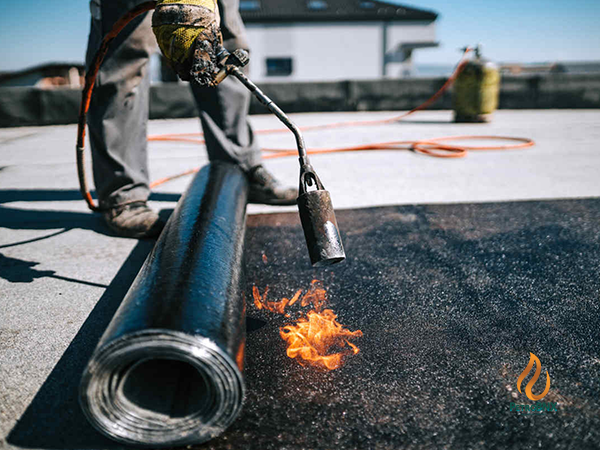
The quality standards of performance grade (PG) bitumen, along with its binder grades, are significant factors influencing its price. Higher-grade PG bitumen typically commands a higher price due to its enhanced performance characteristics, such as better resistance to deformation, cracking, and temperature-related issues. These improved features ensure that higher-grade PG bitumen performs better in extreme conditions, making it a preferred choice for challenging paving environments. Therefore, when selecting PG bitumen, understanding the grade and its associated standards is crucial for determining its cost.
What is Bitumen 85/100: Uses and Advantages
Bitumen 85/100 is a specific grade of bitumen characterized by its penetration range between 85 and 100, indicating its viscosity and ability to withstand high temperatures. This grade of bitumen is typically used in areas where high temperature resistance is essential. Its main uses include:
Road Construction: It is ideal for regions with high traffic volumes and extreme weather conditions.
Paving: Due to its ability to withstand high temperatures, it is widely used in the construction of highways, streets, and other high-traffic roads.
Roofing: Its weather resistance makes it suitable for use in roofing applications, providing durability against harsh environmental factors.
The advantages of Bitumen 85/100 include its excellent resistance to wear and tear, high durability, and suitability for hot weather conditions, making it a reliable choice for various infrastructure projects.
The Determinant Factors in PG Bitumen Pricing
The pricing of PG bitumen is influenced by several key factors:
Market Competition: In a competitive market, suppliers adjust their prices to maintain market share. Comparing the PG bitumen price list from different suppliers can help in making informed purchasing decisions.
Quality Standards and Binder Grades: Higher-grade PG bitumen, such as PG 70-28 or PG 76-22, costs more due to the enhanced properties of the binder. These grades are more resistant to temperature extremes and traffic loads, which justifies the higher price.
Global Petroleum Prices: Since PG bitumen is derived from petroleum, its price is directly affected by fluctuations in the global oil market, geopolitical events, and supply-demand factors.
Refining and Processing Costs: The processes involved in refining petroleum to produce bitumen, including distillation and air blowing, contribute to its overall cost. Maintenance, labor, and equipment expenses also affect the final price.
Transportation Costs: The costs of transporting PG bitumen, especially given its high viscosity and special temperature requirements, add to its price. Distance, transportation methods, and special handling procedures are all factors that can influence the cost.
Results of Grading PG Bitumen
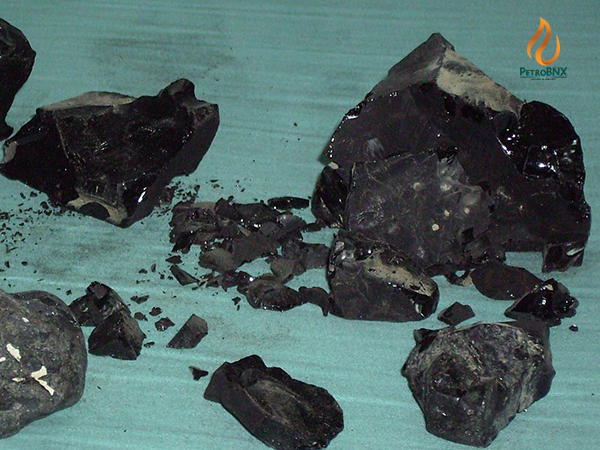
PG bitumen grading is a process that involves testing bitumen’s performance in different temperature ranges. The grading system ensures that the bitumen selected is suitable for the specific environmental and traffic conditions of the intended use area. The Superpave system categorizes PG bitumen based on performance in both hot and cold climates. The tests used for grading include:
Temperature Performance: PG bitumen grades are assessed for their ability to handle high and low temperatures, ensuring durability in extreme conditions.
Rutting Resistance: The bitumen’s resistance to deformation under traffic loads is evaluated.
Fatigue Resistance: Testing the bitumen’s ability to withstand the repetitive stress of traffic without cracking.
These grading tests help road constructors select the right binder for the expected conditions, ensuring long-lasting and efficient pavements.
Long-Term Performance of Paving with PG Bitumen
Long-term performance is a key consideration in selecting PG bitumen for road construction projects. PG bitumen’s ability to perform effectively over time is influenced by factors such as:
Temperature Management: PG bitumen is designed to perform well across a controlled range of temperatures. It resists thermal cracking in cold climates and rutting in hot climates, ensuring long-term durability.
Fatigue and Thermal Cracks: PG bitumen is engineered to reduce the risk of cracks caused by traffic fatigue and temperature fluctuations. This reduces the need for frequent repairs and maintenance.
As part of the Superpave system, experts use various tests to determine the suitability of a binder for different paving conditions, addressing common issues such as cracks and ruts.
Uses of Different PG Bitumen Grades
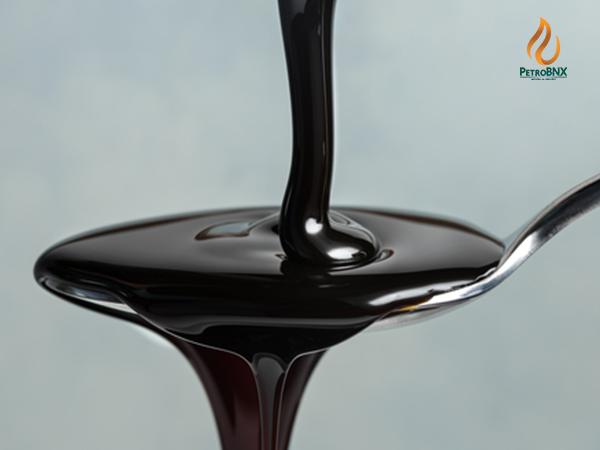
PG bitumen comes in various grades suited for different paving needs:
PG 52-28: Ideal for new road construction, repairs, and sealing cracks. It is often used in hot asphalt mixtures for paving and membrane sprayings on areas like bridge decks.
PG 58-22: Used in both open and dense-graded hot mix asphalt for road construction and maintenance. It is also effective for sealing cracks in pavements.
PG 58-28: Suitable for areas with very cold temperatures, offering excellent low-temperature resistance. This grade is used for both new constructions and repairs, particularly in cold climates where thermal cracking is a concern.
Each grade is tailored to specific environmental conditions, traffic loads, and paving requirements, ensuring optimal performance and durability of the pavement.
Bitumen Grades Explained
PG 58-34:
Performance grade bitumen PG 58-34 is primarily used for paving at higher altitudes, where temperature extremes and environmental conditions can be more severe. This grade is suitable for use in hot mix asphalt, making it ideal for road construction and repair in elevated regions. Additionally, PG 58-34 is effective for sealing cracks and edges of both new and existing pavements, ensuring long-term durability.
PG 58-40:
Similar to PG 58-34, PG 58-40 is commonly used in higher altitude areas. It is used for making hot mix asphalt and for repairs, especially when sealing cracks in existing pavements. Its higher grade (compared to PG 58-34) offers increased performance in challenging environments, ensuring better resistance to wear and tear under extreme weather conditions.
PG 64-22:
PG 64-22 is commonly used in new road construction projects and pavement treatments, as well as in the creation of both open and dense-graded hot mix asphalt. It is particularly useful in repairing pavement cracks, sealing, and spraying bridge decks. The performance characteristics of PG 64-22 make it highly effective for reducing issues such as road damage due to pressure and scuffing. By selecting appropriate aggregates and using PG 64-22 as a binder, the asphalt mix becomes more durable and resistant to damage from traffic. This improves the long-term performance and reduces the immediate need for traffic sign installations after paving.
Performance Grade Bitumen Zoning
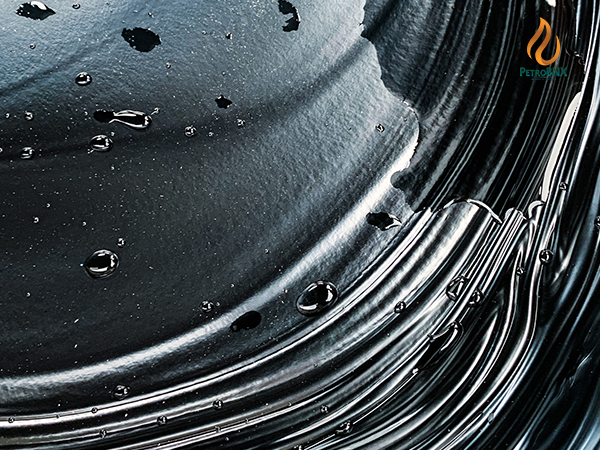
The concept of performance grade bitumen zoning refers to the variation in bitumen performance based on its grade and reliability level. As the reliability of bitumen increases with higher grades, its role in ensuring traffic conditions and zoning performance becomes more critical. Lower-grade bitumen typically has more zoning due to its relatively lower performance in extreme conditions, while higher-grade bitumen has improved characteristics that make it more reliable in a variety of traffic and environmental conditions.
70-60 Performance Grade Bitumen
70-60 bitumen is produced in refinery distillation towers, consisting mainly of asphaltene (heavy, insoluble molecules) and maltene (oily substances). The asphaltene determines the softening point of the bitumen, while maltene contributes to its flexibility. This grade, often called “loose bitumen,” is noted for its excellent adhesion properties, which allows it to bond easily with materials like cement. The higher the compliance of 70-60 bitumen with international standards, the better its overall quality. During production, hot air is constantly blown through the bitumen to ensure that it remains stable and homogeneous, which results in a more durable and effective product.
Other Names of PG Bitumen Based on Its Properties

Performance grade bitumen is known by several other names based on its various characteristics and applications:
Elastomeric Bitumen:
This term emphasizes the elastic and flexible nature of PG bitumen, making it highly resistant to cracking and deformation under stress.
Modified Bitumen:
Modified bitumen refers to PG bitumen that has been altered using polymers to enhance its resistance to extreme conditions, such as high temperatures, cold weather, and heavy traffic.
Superpave Bitumen:
PG bitumen is sometimes referred to as Superpave bitumen, due to the Superpave system (Superior Performing Asphalt Pavement), which originated the grading system for performance-grade bitumen. This system is designed to optimize pavement performance in varying traffic and environmental conditions.
Asphalt Binder:
In certain regions, PG bitumen is simply called asphalt binder, highlighting its essential role in binding the aggregate materials used in asphalt mixtures.
Thermoplastic Bitumen:
This name highlights the thermoplastic qualities of PG bitumen, meaning it softens when heated and hardens when cooled, which allows it to be manipulated and applied effectively in asphalt paving.
Conclusion
PG bitumen grades, such as PG 58-34, PG 58-40, and PG 64-22, are carefully selected based on environmental conditions and expected traffic loads. Each grade is designed to perform optimally under specific conditions, ensuring that roads and pavements remain durable and functional over time. With the added names like elastomeric bitumen, modified bitumen, and Superpave bitumen, the different properties of PG bitumen cater to a wide range of paving applications. Understanding these grades and their applications allows road constructors to choose the most suitable bitumen for their projects, ensuring long-term performance and safety.

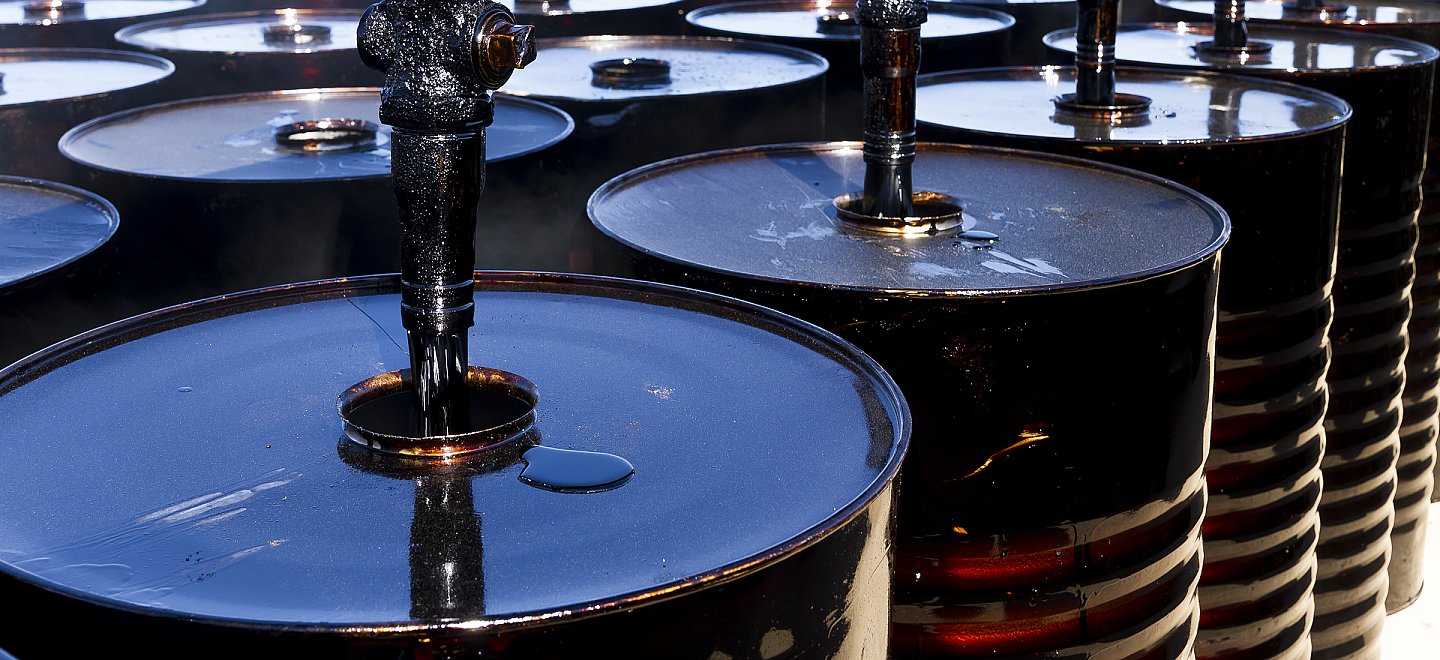
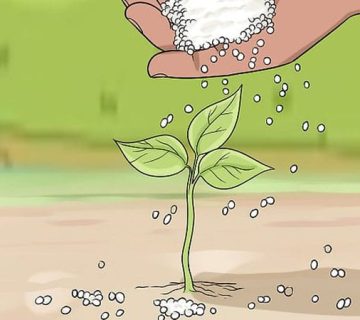
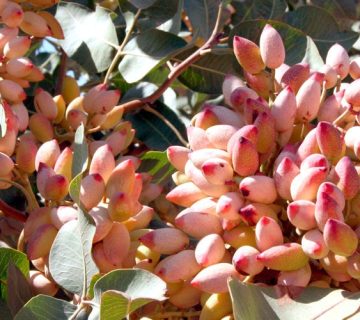
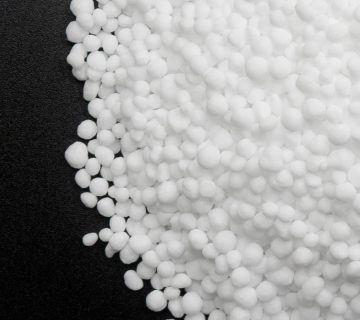
No comment